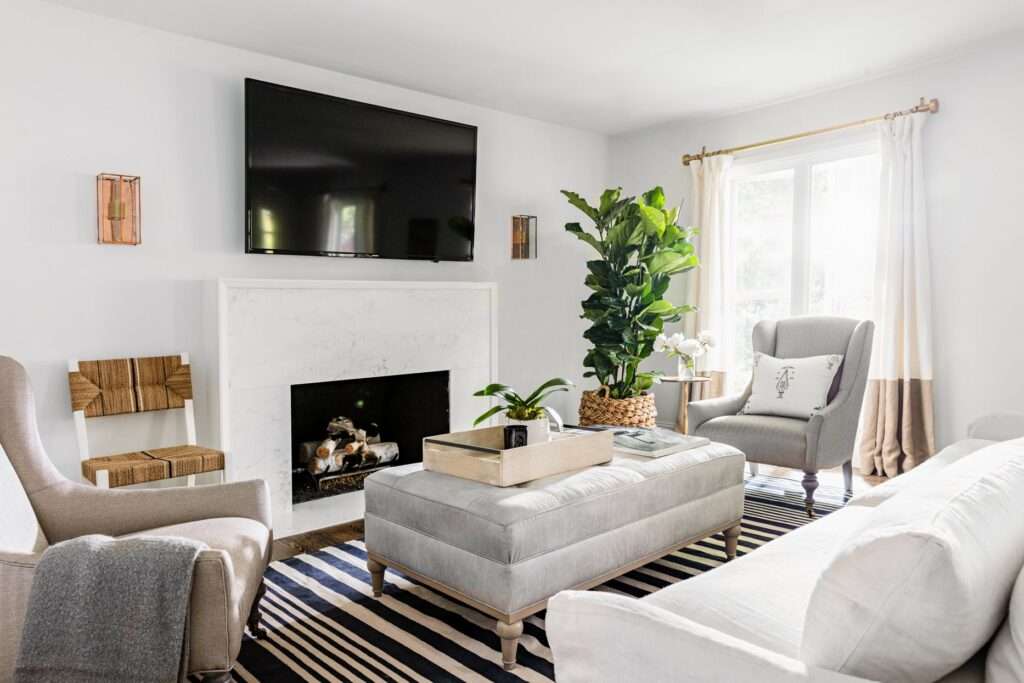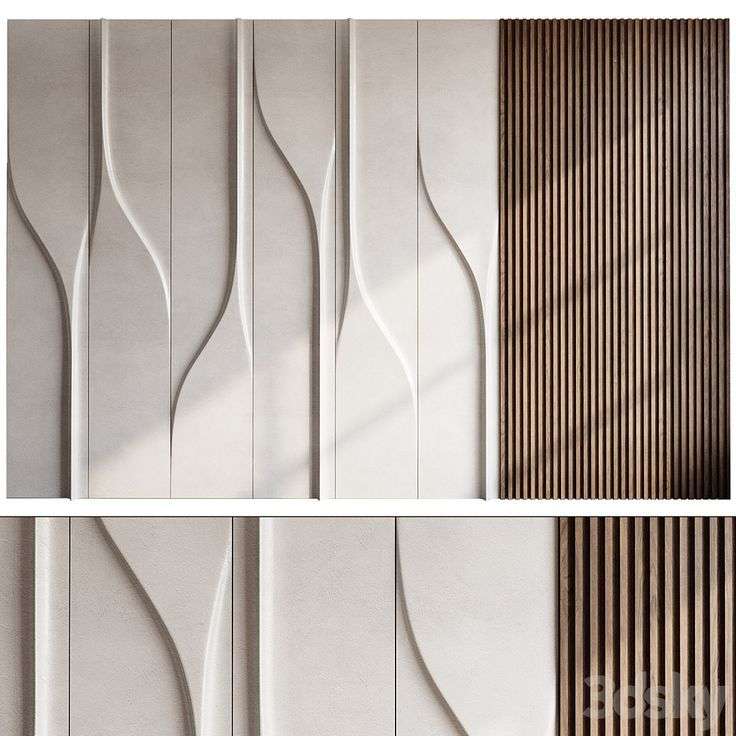Arranging furniture in a room isn’t just about creating a visually appealing space—it’s about enhancing comfort, functionality, and flow. Whether you’re working with a spacious living room, a cozy bedroom, or a compact office, the right furniture arrangement can significantly impact how comfortable and welcoming a space feels.
At Scale & Structure, we understand that every room serves a different purpose, and how you arrange furniture plays a crucial role in maximizing its comfort and utility. In this guide, we’ll walk you through key strategies for arranging your furniture to create a space that’s not only beautiful but also practical and comfortable for daily living.

1. Prioritize Function and Purpose
Before you start moving furniture around, it’s important to define the purpose of the room. The way you arrange furniture should align with how the space is used on a daily basis.
- Living Room: If your living room is used for entertaining, focus on creating conversation zones. If it’s more of a relaxation space, position your furniture for optimal comfort with a focus on the TV or fireplace.
- Bedroom: The bed should be the focal point of the room. Make sure there’s enough space around the bed to allow for ease of movement and easy access to storage.
- Home Office: Arrange furniture in a way that allows for a functional workspace while still feeling inviting. A comfortable desk chair, sufficient lighting, and easy access to shelves or cabinets are key.
Tip: Think about Movement
Ensure there’s enough space to move comfortably from one area of the room to another. Aim for clear pathways around major furniture pieces.
2. Create a Focal Point
Every room should have a focal point that draws attention and anchors the layout. In many cases, this is a natural element like a fireplace, a large window with a view, or a piece of artwork.
- Living Room: If you have a fireplace, arrange your furniture around it to create a cozy and inviting space. If there’s a TV, it should be placed at eye level and be the main focus of seating arrangements.
- Bedroom: The bed is typically the focal point of a bedroom. Arrange the room so that the bed is easily accessible, and ensure it doesn’t get overcrowded by other furniture.
- Dining Room: In a dining room, the table is the focal point. Ensure there’s ample space for people to move around the table and that chairs can easily be pulled out.
Tip: Balance the Focal Point with Functionality
While a focal point is essential, it should not interfere with the functionality of the room. Ensure that furniture placement enhances accessibility and flow.
3. Maximize Seating and Comfort
Comfortable seating arrangements are essential for a well-styled, functional room. Arrange furniture in a way that encourages conversation and provides ample seating.
- Living Room: Arrange sofas and chairs in a circular or semi-circular layout to foster conversation. Avoid pushing furniture up against walls—this can make a room feel disconnected. Instead, leave some breathing room and aim for a cozy, intimate arrangement.
- Chairs and Sofas: Consider placing a pair of armchairs facing a sofa for a balanced seating arrangement. If the room is large, you may need multiple seating zones or smaller groupings of furniture to accommodate guests.
- Ottomans and Footrests: These can help make the space more comfortable, allowing people to relax and stretch out. Ensure they are placed in easy reach from seating areas.
Tip: Consider Scale
Ensure that furniture is appropriately sized for the space. Avoid oversized furniture in small rooms, and make sure that seating provides comfort without overcrowding the area.
4. Balance the Space with Symmetry and Asymmetry
The balance in a room’s layout is crucial to making it feel harmonious. A well-balanced room should feel even, visually pleasing, and comfortable.
- Symmetry: For a more traditional or formal look, opt for symmetry by placing matching furniture pieces on either side of the room. For example, you could place two identical armchairs on either side of a sofa to create balance.
- Asymmetry: If you prefer a more modern or relaxed vibe, asymmetry works well. You can mix different-sized furniture pieces or use accessories (like lamps, artwork, and rugs) in varying sizes to create visual interest without strict symmetry.
Tip: Be Mindful of Heavy Furniture
Avoid placing too many large pieces of furniture on one side of the room, as it can create a feeling of heaviness. Instead, balance out large pieces with lighter elements like art, lighting, or smaller furniture.
5. Consider Traffic Flow and Clear Pathways
Ensuring there’s a clear flow of movement throughout the room is essential for maximizing comfort. If furniture is arranged too tightly or blocking paths, it can make the space feel cramped and impractical.
- Living Rooms: Make sure there are wide, unobstructed paths between seating areas, especially around high-traffic areas like doorways and windows. Aim for at least 3 feet of walking space around furniture.
- Dining Rooms: Leave ample space between the dining table and walls or other furniture so people can easily pull out chairs and walk around the table.
- Bedrooms: Allow at least 2 to 3 feet of space on either side of the bed for easy access. Avoid overcrowding with furniture that could hinder movement.
Tip: Use Area Rugs to Define Zones
In larger rooms or open floor plans, use area rugs to help define specific areas or zones. This can help create a sense of balance and function within the room.
6. Utilize Multi-Functional Furniture
In smaller spaces, multi-functional furniture is essential for maximizing comfort and utility. Opt for pieces that can serve more than one purpose, saving space and ensuring you don’t overcrowd the room with unnecessary items.
- Storage Ottomans: These can double as both a footrest and a storage solution for extra pillows, blankets, or magazines.
- Expandable Tables: For dining or workspaces, consider an expandable table that can accommodate more guests or work activities when needed but can be compact when not in use.
- Convertible Sofas or Chairs: Sofa beds or foldable chairs offer flexibility in multi-purpose rooms, allowing for seating during the day and a sleeping area at night.
Tip: Maximize Vertical Space
In rooms with limited floor space, look for furniture that makes use of vertical space, such as wall-mounted shelves or tall storage units. This will help you avoid clutter while maintaining comfort.
7. Add Personal Touches and Decorative Accessories
While furniture arrangement is key to creating comfort, the final touches—such as decorative accessories—can elevate the entire space. Personal items like family photos, artwork, or heirlooms help to make the space feel more intimate and lived-in.
- Accent Pieces: Incorporate statement lamps, rugs, or throw blankets that complement your furniture arrangement and bring warmth to the room.
- Wall Decor: Add artwork or mirrors to reflect your personal style and enhance the room’s aesthetic appeal.
- Greenery: Plants, whether large floor plants or small succulents, can introduce color and life into a room while improving air quality.
Tip: Don’t Overcrowd with Accessories
Too many accessories can make a space feel cluttered. Stick to a few well-chosen pieces that enhance the design and feel of the room without overwhelming it.
8. Adjust for Natural Light
Natural light can completely transform the comfort level of a room. Arrange furniture so that you can take full advantage of available light, ensuring your space feels bright, airy, and welcoming.
- Seating and Windows: Place seating areas near windows so people can enjoy natural light throughout the day.
- Light-blocking Furniture: Avoid placing large pieces of furniture, like tall bookshelves, in front of windows. Instead, allow sunlight to stream in and create an uplifting atmosphere.
- Curtains and Blinds: Choose light, airy window treatments that allow for maximum light while offering privacy when needed.
Tip: Use Reflective Surfaces
Mirrors or shiny furniture pieces can help reflect light throughout the room, enhancing the overall brightness and warmth of the space.
Conclusion: Arranging Furniture for Comfort and Style
The right furniture arrangement can completely transform a space, making it more functional, inviting, and comfortable. By prioritizing the purpose of the room, creating focal points, maximizing seating and flow, and incorporating thoughtful decorative touches, you’ll create an environment where comfort and style coexist seamlessly.
At Scale & Structure, we specialize in designing spaces that are both beautiful and functional. Need help arranging your furniture for maximum comfort? Contact Scale & Structure today and let us help you create a space that perfectly balances comfort, style, and function.



